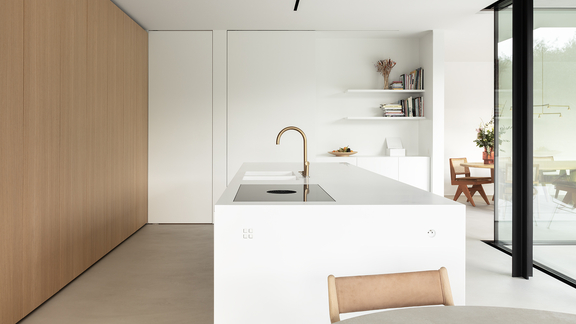

What do the purist Japanese interior design style and understated Nordic coolness have in common? In a Japandi kitchen, natural materials, soft colours and clear shapes merge to create a calm, homely atmosphere. What is the concept behind the Japandi style, what colours are used - and how do you decorate in this style?
East and north become Japandi: the Japandi kitchen combines the aesthetic clarity typical of Japan with the warm cosiness of Scandinavia. But what exactly characterises the Japandi style?
According to the motto "less is more", a Japandi style kitchen has a reduced, functional look: furniture and decor in clear lines, a light, warm colour scheme, natural materials, matt surfaces and wide, sparsely furnished and decorated surfaces. The result is a space to take a deep breath in which it is easy to keep things tidy. A room that impresses with stylish functionality.
The roots of the Japandi kitchen trend go back many years. Classic Japanese design is based on reduction to the essentials, naturalness and simplicity. In the 20th century, designers in Scandinavia shaped a style that also focussed on purist simplicity, natural materials and clean lines. In the 2010s, interior designers began to specifically combine the common features of both styles - the Japandi style for the kitchen was born.
Good to know: The boho look also plays with natural materials. Like Japandi, it relies on untreated materials and earthy colours. Instead of no-frills straightforwardness, however, lush details such as fringes, feathers, embroidery and macramé create a visual wow effect.
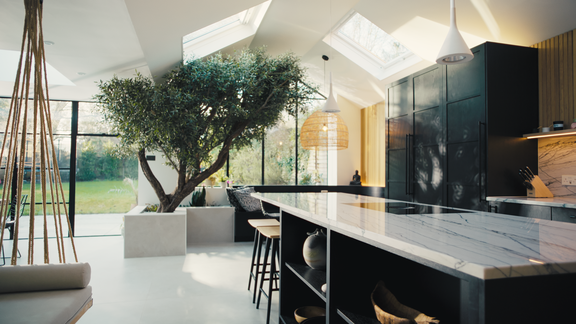
Which colours are used in the Japandi style, which wood blends harmoniously into the look? The following applies to all materials and colour tones in the Japandi kitchen: calmness, simplicity and elegance are the trump cards. You choose from shades such as ...
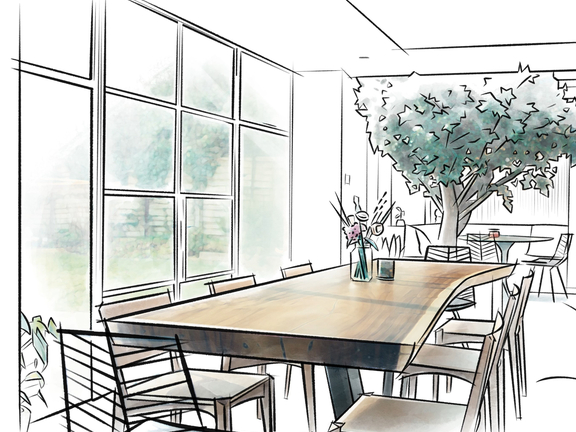
off-white
light grey and greige tones
Muted earthy colours such as olive green and terracotta
Create strong contrasts and depth with dark accents, for example with matt black surfaces.
Natural materials complement the soft colour scheme of the Japandi kitchen:
Functional and with a clear look: decorative objects make themselves useful in the Japandi kitchen. Rough glazed ceramic vases with a clear design, woven baskets, linen tea towels, stone or concrete-look storage boxes emphasise the perfect symbiosis of north and east.
Tip: With individually arranged eucalyptus branches in narrow, tall stone vases, you can bring targeted freshness and structure into the room. We reveal more decorating ideas for your kitchen in our guide.
Would you like to make minimalism a statement in your home? A Japandi style kitchen is ideal for open interior concepts, large rooms, but also for classic kitchens in a separate room. To emphasise the characteristic spaciousness, we recommend a room size from approx. 15 m².
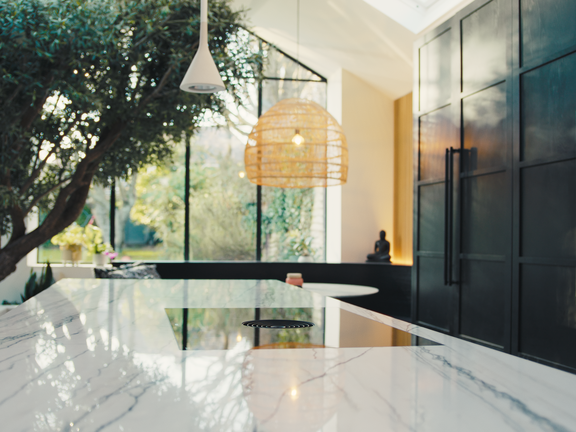
Bring nature into your Japandi kitchen - for example with a large olive tree as an eye-catcher or bamboo plants for an Asian touch.
Simplicity is the leitmotif in the Japandi style kitchen - and this also applies to the integration of electrical appliances. Built-in versions remain elegantly in the background, while small appliances disappear in cupboards and behind closed fronts.
In order to emphasise the open, light atmosphere, the installation of a cooktop extractor system such as BORA Pure is ideal. Particularly when integrated into a central kitchen island, the generous width of the room is retained - and in open-plan layouts you can enjoy an unobstructed view into the living area.
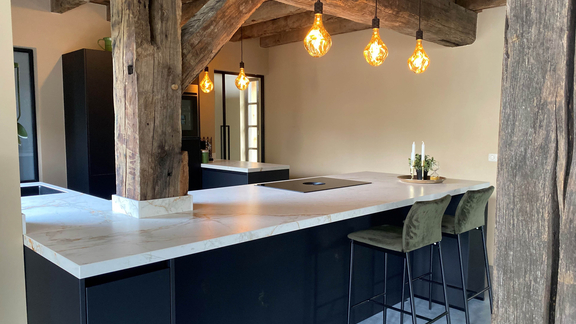
The BORA cooktop extractor system extracts vapours directly from the cooktop. Which solution suits your kitchen?
In the Japandi kitchen, the BORA cooktop extractor system not only ensures fresh air in the natural kitchen: the low height guarantees maximum storage space for pots and other kitchen utensils in the base unit.